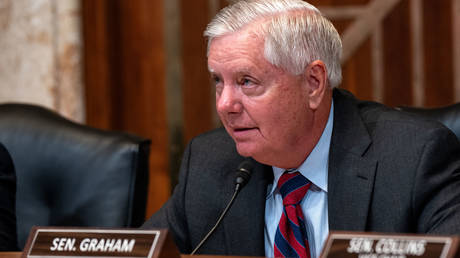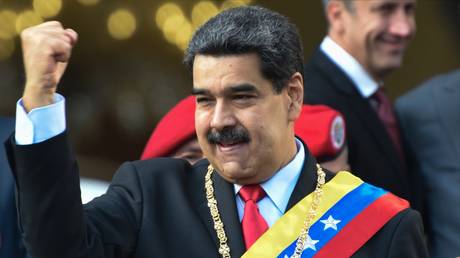New research suggests the KBC void is a 2 billion light-year-wide expanse of relatively empty space, and our galaxy sits right near the center of it.
Pablo Carlos Budassi / Wikimedia Commons
Evidence suggests that our galaxy is inside a cosmic void, a vast expanse of relatively empty space.According to our laws of cosmology, however, this void should not exist.New research says that such a void may explain unusual behavior in nearby galaxies.
Our home galaxy, the Milky Way, is just one of billions in our universe. So, in the grand scheme of things, we’re not so special. But zoom in to our local cosmic neighborhood, and that story begins to change.
According to a growing list of evidence, we live in the crosshairs of a giant cosmic void — the largest ever observed. Astronomers first suggested such a void in 2013 and the evidence for its existence has been stacking up ever since.
But the kicker is that this giant void shouldn’t exist in the first place. If it does exist, that means something is probably amiss with our understanding of the cosmos.
We live in a void that shouldn’t exist
A map of our local universe.
Harvard-Smithsonian Center for Astrophysics
According to a fundamental theory of cosmology called the cosmological principle, matter in the universe should be uniformly distributed on very large scales.
The reason this matters is that by assuming uniformity, scientists can apply the same laws of physics to nearby objects as objects at the fringes of the early universe. In other words, everything operates under the same universal laws.
It’s a simple, straightforward approach to studying and understanding our universe, and it suggests that voids — like the one we may live in — shouldn’t exist.
However, multiple observations over the last decade suggest that matter in the universe may clump into regions of high- and low densities, meaning it’s not so uniform, after all.
The Dark Energy Spectroscopic Instrument (DESI) made the largest 3D map of our universe to date. This sliver of the cosmos shows its high- and low- density regions.
Claire Lamman/DESI collaboration; custom colormap package by cmastro
“By now it’s pretty clear that we are in a significant underdensity,” Indranil Banik, a postdoctoral research fellow at the University of St. Andrews, told Business Insider.
“There’s a few people that are still opposed to it to a limited extent. For example, some people have correctly argued that such a void shouldn’t exist in the standard model, which is true. That unfortunately doesn’t prove it’s not there,” he added.
Banik co-authored a paper published late last year in the peer-reviewed journal Monthly Notices of the Royal Astronomical Society that suggests we may live near the center of this void — called the KBC void — about 2 billion light-years across. Wide enough to fit 20,000 Milky Way Galaxies in a row stretching from one end to the other.
The KBC void defies the laws of cosmology
Observations from the Hubble Telescope conflict with standard cosmology predictions about the expansion of the universe. The KBC void could explain why.
NASA
The KBC void isn’t totally empty. It can’t be, because we live in it. But, if Banik and his colleagues’ calculations are correct, the void would be about 20% emptier than space outside its border.
That may not seem like a big deficit, but it’s enough to cause some confusing behavior in our local cosmic neighborhood, according to the recent study.
In particular, nearby stars and galaxies are moving away from us faster than they should be. Cosmologists have a value, called the Hubble constant, which they use to help describe how fast the universe’s expansion is accelerating.
The Hubble constant should be the same value wherever you look, whether it’s close by or very far away. The problem is that the galaxies and stars in our local neighborhood appear to be moving away from us faster than the Hubble constant predicts, essentially defying our law of cosmology that describes how the universe grows and evolves.
Approximately 2.5 million light-years away, the Andromeda galaxy, is our Milky Way’s largest galactic neighbor.
NASA/JPL-Caltech
Astronomers can’t agree on what’s causing this discrepancy in the Hubble constant, and the contention has become known as the Hubble tension.
Banik and his colleagues suggest that the void could be a solution because high-density regions with stronger gravity outside the void could be pulling galaxies and stars toward them.
Banik argues that these outflows could explain why cosmologists have calculated a higher value for the Hubble constant when looking at nearby objects. Stuff moves faster in the void, flying out of our empty region towards crowded outer space.
Mystery solved? Not yet.
The KBC void isn’t the only possible solution to the Hubble tension. Some scientists are peeling back layers of of the cosmos to reveal the earliest stages of its formation, and look for ‘early dark energy.’
NASA/ESA/A. Riess (STScI/JHU)/Palomar Digitized Sky Survey
If the void does exist, as evidence suggests, that may mean we need to revise some of the physical laws we use to describe the cosmos. After all, Banik’s theory would explain why the Hubble constant is higher in our local cosmic region.
“The hypothesis that a local void could explain the Hubble tension by inducing significant outflows seems sound in principle, especially given the supporting observational data cited in the study,” Brian Keating, cosmologist and physics professor at UC San Diego who studies the Hubble constant, told BI in an email.
But there are still questions that need to be answered. For one, how far does the influence of the void extend? Keating asks.
“If the local void isn’t representative of the wider cosmos, this may only provide a local solution, not a global one — that wouldn’t ‘solve’ the Hubble tension,” he wrote.
Keating also notes that Banik’s theory has certain limitations. The study’s results are dependent on the type of void model used, he wrote. Different models yield different predictions about void effects and the “bulk flow,” or the average speed of galaxies as they move through the cosmos. Plus, models can only offer a simplified view of what the void really is.
All of this means that the void could offer a solution, but “it is not a definitive ‘proof’ yet of the resolution of the tension,” Keating wrote.
There are other solutions to consider too, such as early dark energy. This theory proposes a new form of energy that affects the universe’s expansion rate in its early stages, ultimately leading to the Hubble tension we observe today, Keating wrote.
Methuselah, the oldest star ever observed. Scientists disagree about exactly how old this star is, and some studies suggest it could somehow be older than the universe itself.
Digitized Sky Survey (DSS)/STScI/AURA/Palomar/Caltech/UKSTU/AAO
But Banik notes that the early dark energy theory conflicts with certain truths about the universe. For example, we’d have to amend the ages of ancient stars to make it work. Otherwise, these stars would have to be older than the universe itself, Banik said.
So, he’s sticking to his void theory. His next research project will analyze supernovae data to figure out whether the Hubble constant returns to the value predicted by our standard model of cosmology outside of the void. If his theory is correct, there shouldn’t be any Hubble tension outside the void’s borders.
“This is the main thing which sometimes keeps me up a little bit — worrying about if the supernovae really show that we’re in a universe that’s actually expanding faster, and there’s no sign of the void edge,” Banik said.
Until then, the Hubble tension remains a mystery waiting to be solved.





+ There are no comments
Add yours